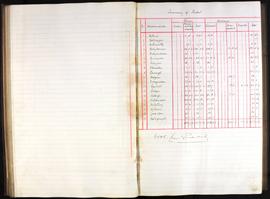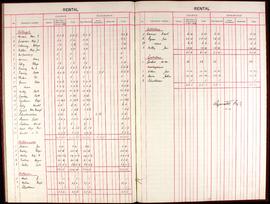- IE OCCHO DIGBY/C/14
- Item
- 1886
Part of Digby Irish Estates
Annual report, accounts and rental for year ending June 1886, showing a further reduction in the gross rental received by £152.13.0 and noting a considerable increase in arrears outstanding mainly attributable to the continued and intensified depression in the value of almost all kind of stock and farm produce, recent proposed legislation and a renewed demand for alteration of land laws. Forestry works consisted of 20 acres planted in Derryclure Wood and Scrubb Wood.
Describes a further agitation at the winter collection of rents (1885) with the object of procuring an abatement of rents that have been recently judicially fixed. Also describes the 'great excitement' among the tenantry derived from the Home Rule movement and the Parnellite party.


